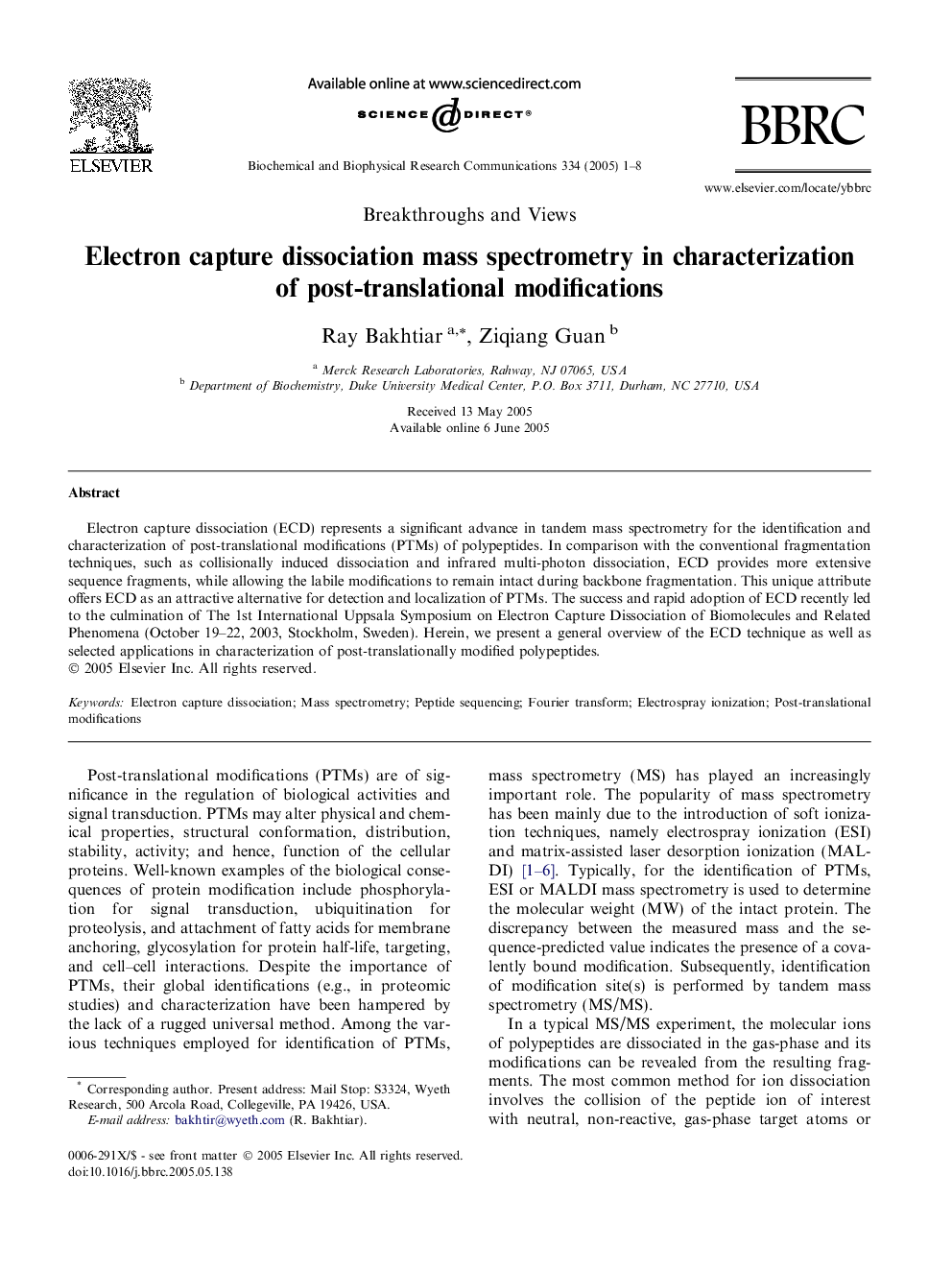| Article ID | Journal | Published Year | Pages | File Type |
|---|---|---|---|---|
| 10769434 | Biochemical and Biophysical Research Communications | 2005 | 8 Pages |
Abstract
Electron capture dissociation (ECD) represents a significant advance in tandem mass spectrometry for the identification and characterization of post-translational modifications (PTMs) of polypeptides. In comparison with the conventional fragmentation techniques, such as collisionally induced dissociation and infrared multi-photon dissociation, ECD provides more extensive sequence fragments, while allowing the labile modifications to remain intact during backbone fragmentation. This unique attribute offers ECD as an attractive alternative for detection and localization of PTMs. The success and rapid adoption of ECD recently led to the culmination of The 1st International Uppsala Symposium on Electron Capture Dissociation of Biomolecules and Related Phenomena (October 19-22, 2003, Stockholm, Sweden). Herein, we present a general overview of the ECD technique as well as selected applications in characterization of post-translationally modified polypeptides.
Keywords
Related Topics
Life Sciences
Biochemistry, Genetics and Molecular Biology
Biochemistry
Authors
Ray Bakhtiar, Ziqiang Guan,
